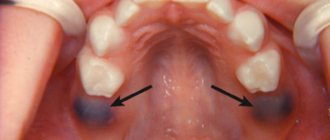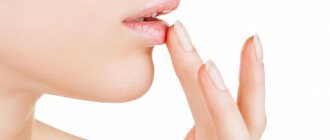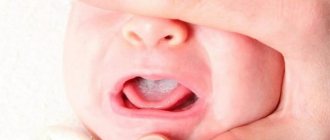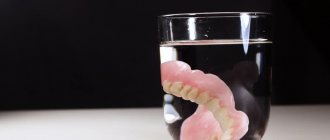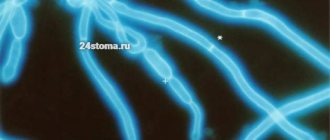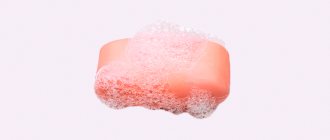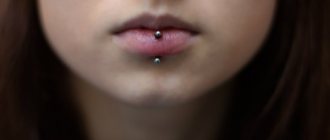In the first days of life, a baby's skin may become covered with small pimples of different appearance, color and location. In order not to worry and wonder why you suddenly encountered this scourge, it is better to immediately familiarize yourself with the most common causes of its occurrence and, depending on what exactly the problem in your case entailed, decide on treatment. Not all pimples in children need it; many go away on their own.
What is newborn acne and what causes it?
Between two and five weeks of age, small pimples may appear on your baby's face (usually on the cheeks, nose, eyelids, chin and/or forehead). According to statistics, acne of newborns (or infant acne, neonatal pustulosis) occurs in 30% of babies. Experts do not agree on why acne occurs, but it may be due to one of the following reasons:
- inflammation of the skin caused by fungi of the genus Melassezia, which are part of the normal human microflora and colonize the skin in the first weeks after birth
- overactive sebaceous glands on the baby’s skin, caused by the specific action of maternal hormones (androgens)
Pimples on a newborn's face have nothing in common with acne in teenagers.
Causes of rashes
The reasons are physiological, which are provided by a natural response to an internal process in the body. There may also be pathological causes that develop against the background of:
- disorders under the influence of parasites;
- chemical and toxic substances;
- metabolic disorders;
- lack of certain vitamins;
- dysbacteriosis;
- gastrointestinal and renal function disorders;
- external and internal factors.
As a result, we can conclude that rashes in childhood do not appear without a reason.
It seems to parents that all rashes are almost the same. However, there is a primary rash, which formed first, and a secondary one, which developed over time, instead of or near the primary one.
How to get rid of acne in newborns
There are no home remedies to get rid of newborn pimples on the face. You need to wait until they disappear on their own. Typically, newborn acne goes away in about three to four months without leaving any traces. Here's how to take care of your baby's delicate skin if he has pimples:
- Wash him every day with warm water and mild baby soap, then pat dry.
- Try to avoid any rubbing of the affected areas of the skin, as this can make the process worse or even lead to infection.
- Do not apply lotions or oils to your baby's face.
- There is no need to follow a diet, since neonatal acne has nothing to do with the mother’s diet
Do pimples need to be treated?
As you can see from this material, the majority of small white pimples in children go away on their own. You just need to wait, usually by the age of two months, children have completely smooth skin without rashes. You should not squeeze pimples, otherwise there is a risk of damage to the upper layers of the skin, infection and scarring later.
If you doubt the causes of acne, be sure to visit a specialist to make a correct diagnosis. To alleviate the child’s condition, the following options can be recommended:
- washing with boiled water three times a day;
- bathing the baby in a weak solution of potassium permanganate;
- bathing a child in a line;
- rubbing the baby’s face with a decoction of string or chamomile;
- competent care for baby's delicate skin.
Under no circumstances use fucorcin, a strong solution of potassium permanganate or brilliant green for treatment, avoid lotions with alcohol, as all these compounds will negatively affect the baby. You should also forget about fatty oils, ointments, powder, calendula tincture, hormonal ointments, lactic acid bacteria, adsorbents (for example, smecta), antibiotics and antihistamines. And, as already mentioned, you should not squeeze out pimples of any kind in children.
When to see a doctor
If you are concerned about your baby's complexion or if you are concerned that the condition is not improving after three to four months, consult your pediatrician. Your doctor may prescribe a special cream to treat acne in a newborn. Do not use over-the-counter creams or any other medications for acne without first consulting your pediatrician as they may harm your baby. Contact your pediatrician if your newborn has any of these symptoms:
- blisters on the skin
- peeling skin
- heat
- uncharacteristic tearfulness
- poor appetite
Preventive measures
Almost all acne in babies is not dangerous. Their occurrence can be easily avoided if you follow a number of measures:
- watch your diet;
- if there is a reaction to the mixture, replace it;
- properly care for your baby and maintain hygiene;
- give the baby air baths;
- wash your baby’s underwear with specially designed powders.
If acne does not go away for a long time and bothers the newborn, doctors usually prescribe medications: Panthenol, Bepanten or Zinc ointment.
Classification of the disease
There are four main types of miliaria, which differ in the nature of the rash, the duration of development and the severity of symptoms:
- Crystalline. It is accompanied by the development of a blistering rash, which most often appears on the head, behind the ears, and on the neck. Other localization of rashes is also possible. 2-3 days after the appearance, the blisters dry out and begin to peel off. Since irritation is not accompanied by inflammation or infection, the crystalline form is the simplest and most harmless.
- Red. A more complex type, in which sweat acts on the skin for a longer time and, accordingly, causes more severe irritation. A rash in the form of small inflamed tubercles provokes slight swelling and is accompanied by itching, burning, and discomfort. Lasts about two weeks.
- Miliaria alba, or vesiculopustulosis. With this type, blisters with a whitish or yellowish filling appear on the skin. When the bubble bursts, it leaves behind a light coating. The presence of color in the bubbly fluid indicates that the rash is accompanied by an infection, often staphylococcal.
- Deep. In most cases, prickly heat causes only superficial damage to the skin. With a deep form of pathology, the deep layers of the skin are affected. The disease is accompanied by blisters filled with light contents, which resolve or burst spontaneously.
Treatment of herpetic sore throat
Patients with complications require hospitalization in an infectious diseases hospital and treatment under the supervision of specialized specialists - a neurologist and a cardiologist. If the doctor has recommended treatment at home, it is necessary to closely monitor the patient's condition2.
The sick person should be isolated and stay in a clean, well-ventilated area so as not to infect other family members. Quarantine must be observed until symptoms subside1.
For herpangina you should 1,3,4:
- Wash your hands as often as possible, including after feeding and changing a sick child’s diaper.
- Disinfect surfaces and objects with which the patient has been in contact.
- Drink enough fluids to avoid dehydration. At the same time, pay attention to the temperature of the drink: hot, warm drinks irritate the mucous membranes and cause additional discomfort. You can drink cool drinks.
- Consume food in liquid or mushy form. Spicy, salty, sour foods, including fresh fruits even in the form of puree, are not suitable for a patient with herpetic sore throat.
- Rinse your mouth with a saline solution after every meal to maintain oral hygiene and prevent bacterial infections from erosions.
- Use a soft toothbrush to reduce trauma to the mucous membrane.
Currently, there is no proven antiviral drug to treat herpangina by acting on its causative agent. Sometimes a doctor may prescribe medications that support local immunity of the pharyngeal mucosa1. Antibiotics are not prescribed for herpangina6.
The goal of treatment for herpangina is to relieve the symptoms of the disease4.
If the body temperature is above 38.5°C, physical methods such as cold compresses and ice packs may be used. Your doctor may also recommend anti-inflammatory and antipyretic medications1. Local treatment includes agents with anti-inflammatory, analgesic, enveloping and antiseptic effects1.
For the symptomatic treatment of herpetic sore throat, the doctor may prescribe the drugs HEXORAL®7,8,9,10,11. It is convenient to use HEXORAL® spray to irrigate the pharyngeal mucosa. The active substance of the spray is hexethidine. It acts against the main bacteria found in the oral cavity and pharyngeal mucosa8. The drug is also active against some viruses and fungi of the genus Candida8. Thanks to the local anesthetic effect of hexethidine, HEXORAL ® spray helps reduce pain8. HEXORAL®7 solution is suitable for rinsing. The use of HEXORAL ® spray and solution is allowed in children over 3 years of age7,8.
If herpangina causes severe pain and discomfort, adolescents over 12 years of age and adults can benefit from HEXORAL ® TABS EXTRA lozenges, which contain the anesthetic lidocaine10. For children over 4 years of age, HEXORAL ® TABS lozenges may be suitable. The anesthetic benzocaine in their composition helps reduce pain in the throat and mouth9.
All medications for herpetic sore throat should be used only after consultation with a doctor. In case of severe erosions, HEXORAL ® solution and spray are contraindicated7,8, and lozenges can only be prescribed by a specialist after examining the pharynx9,10.
Up to contents
The information in this article is for reference only and does not replace professional advice from a doctor. To make a diagnosis and prescribe treatment, consult a qualified specialist.
What parents need to do
To assess the situation, parents need to examine the child’s skin by undressing him. It is necessary to determine the nature of the rash (vesicle, pustule, papule, etc.), and its area. It is necessary to remember and analyze the situation preceding the appearance of a rash on the body.
The next step is to measure the temperature, examine the throat and tonsils, and identify other signs if any. You need to decide whether to call a doctor at home or visit a medical facility yourself.
What not to do if a rash appears
Prohibited actions:
- squeezing out pustules;
- scratching the rash;
- self-treatment;
- opening of bubbles;
- applying brightly colored products to the skin, as this complicates diagnostic measures.
Do not forget that some infectious diseases accompanied by the appearance of skin rashes are contagious. As a result, you should not go to the clinic with your child, since you can infect someone while waiting your turn. In such a situation, it is recommended to call a doctor home.
Purulent rashes
Pustular purulent rashes are characteristic of bacterial infections. Most often, such diseases develop under the influence of Staphylococcus aureus. Sometimes the reason may lie in the influence of epidermal staphylococcus and streptococcus, as well as some other microbes, on the body.
A similar rash can appear due to microtraumas on the skin, scratches and wounds that allow microbes to penetrate inside. If the rashes are itchy and itchy at first, and the baby begins to scratch them, a bacterial infection occurs and pustules appear.
The formation of pustules in the area of the knees and elbows in childhood is possible with frequent trauma to the skin due to numerous falls. The formation of deep abscesses is called furunculosis.
Types of rashes
Various childhood diseases manifest themselves as primary symptoms in combination with secondary symptoms. The initial rash varies. Equally important is the quick reaction of the parents and the determination of what formation has formed on the child’s body:
- Tuberous. Any detail of such a rash is located deep in the dermis, in other words, the rash is not superficial. There is no cavity, there is a small protrusion in the form of a tubercle, the color of the skin may change to red or purple.
- Blisters. This is what people call almost any formation on the skin. However, in reality, the blister is a round, pink formation that lacks a cavity and contents. A real blister is short-lived, it can last from a couple of minutes to a couple of hours, then disappears without a trace. As an example, we can recall a nettle burn.
- Papular eruptions. This rash is also called nodular, since the papules are similar in appearance to nodules, which differ in shade from the normal color of the skin. Papular rash can be superficial or deep, and papules can disappear without a trace.
- Vesicular rash. This rash appears as blisters on the skin. There may be a serous, colorless or serous-bloody liquid secretion inside. Vesicles can be single or fused, forming a formation with numerous chambers. Opened vesicles leave erosion on the skin, the size of which is equal to the area of the bottom of the vesicle.
- Bullous. This type of rash also appears in the form of vesicles, but compared to vesicles, the bulla has a more impressive size - at least 5 mm in diameter. Such blisters may, like vesicles, contain serous or serous-bloody liquid contents.
- Pustular. Pustules are a pustular rash. It can be superficial or located deep in the skin. The opening of superficial pustules passes without a trace. If medium and deep pustules (boils, carbuncles) are opened, unsightly scars may occur.
- Spot-like rashes. This type of rash does not appear on the surface of the skin, but is characterized by a change in shade in some areas of the body. Such rashes can be vascular or petechial.
- Roseola. This is the name for rashes that appear in many pathologies of an infectious nature. All elements of the rash are pink or moderately reddish in color. The structure of roseola resembles specks. When the skin is stretched and pressure is applied, the rash turns pale and disappears for a while.
- Hemorrhagic rashes. This type of rash appears as red blood spots that form in the area where the blood vessel burst. When the skin is stretched, hemorrhage does not disappear.
Secondary rashes also vary. It manifests itself in the form of scabs, which are accompanied by the transformation of elements of the primary rash (usually vesicular or pustular) into crusts after opening. The development of cracks, erosions, detachments of epithelial cells, abrasions, scars and ulcers is also often observed as secondary manifestations.
Diagnostics
You should not self-medicate or try to diagnose your child yourself. Before you begin to treat prickly heat in a child, when the first rash appears, you should contact a pediatric dermatologist or pediatrician. The specialist will conduct an examination and distinguish the pathology from other diseases that are accompanied by a skin rash. For an experienced pediatric specialist, this is not difficult even with an initial visual examination.
In some cases, additional examination is necessary for a comprehensive diagnosis. The doctor may prescribe scraping for pathogenic fungal infections, as well as bacterial culture for microflora.
Where skin rashes may appear
Small red rashes are the most common type of rash that can appear in children at different ages, especially in early childhood, preschool and primary school.
Small rashes without suppuration can appear on the scalp, face, armpits, shoulders, abdomen, back, buttocks, perineum, groin. Such rashes are typical for allergies (food, medication or cosmetic). They can also be the result of overheating and poor hygiene. This leads to diaper rash and prickly heat. In babies of the first year of life, the rash may cover the head, since thermoregulation is carried out through the skin in this area of the body.
The skin of the face may become covered with a red rash due to certain pathologies of a viral nature. In the case where the child was not given any suspicious new foods or medications, or there were no changes in lifestyle, rashes may still appear on the face. In this case, you should measure your temperature and consult a pediatrician.
Red rashes of various sizes and types can appear on the arms and legs of children against the background of infectious diseases of a viral and bacterial nature, scarlet fever, measles, leukemia.
It is quite difficult to detect colorless rashes, although over time they appear more pronounced. Most often, this type of rash indicates the initial stage of allergy development. Almost imperceptible rashes without a specific color or too pale, covering the body, can create a feeling of roughness when touched. This is similar to goosebumps running across the skin during fear or chills. The rashes are located close to each other and can be widespread.
Watery rashes are a clear sign of herpetic and pustular infectious diseases, allergies, insect bites and sunburn.
Bubbles filled with liquid contents may appear in the following places:
- in the facial area (nasolabial triangle, lips, nose);
- in the area of the sides and limbs, genitals, groin and inner thighs;
- in the anal area.
In this case, the development of an infection of pustular or herpetic origin can be suspected. In almost the same way, an allergic reaction to the use of skin care products occurs upon contact with chemicals and toxins, which cause a local reaction reminiscent of a chemical burn.
Due to prolonged exposure to sunlight, blistering lesions may appear on the skin, and the skin will be red and slightly swollen.
The appearance of blisters on the skin in the area of the hands and feet may indicate dyshidrosis - blockage of the sweat glands. The palms and heels may become covered with blisters due to the development of certain pathologies of a fungal nature.
